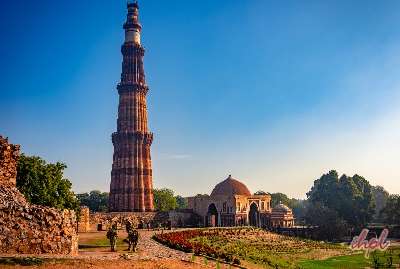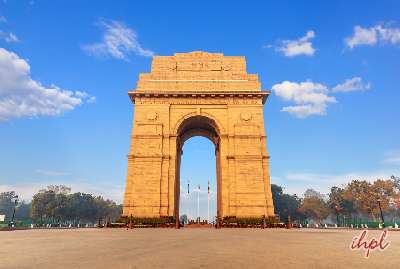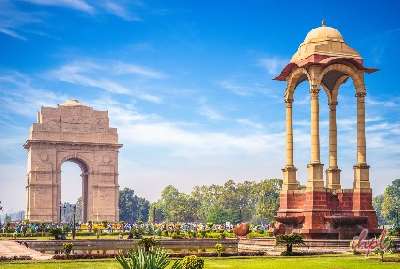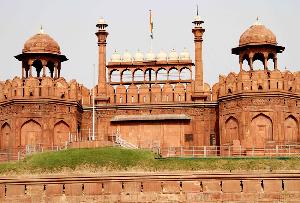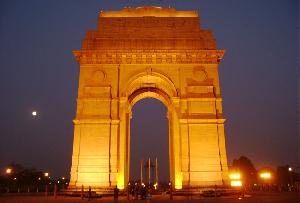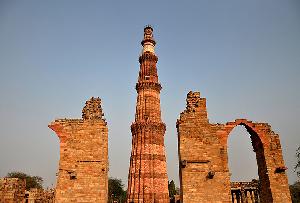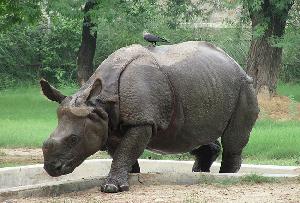Located in the heart of the historic Nizammuddin Village about 2 kms away from Humayun’s Tomb is Nizammuddin’s Tomb or Dargah Hazrat Nizamuddin, one of the country’ s most revered places and also an important tourist attraction of Delhi.
The tomb which is the shrine of the famous humanitarian Muslim Sufi and mystic saint, Sheikh Hazrat Nizamuddin Aulia Chishti is one of the most respected places of worship in the country. Revered equally amongst both Hindus as well as Muslims of the country, the mausoleum as we see it today was built in 1562 by a rich merchant called Faridu’n Khan.
Checkout: Delhi Tour Packages
Born in the city of Badaun in Uttar Pradesh in 1236, Sheikh Hazrat Nizamuddin was the disciple and successor of the saint Sheikh Farid Shakarganj and commanded a large following of devotees which included names like Alauddin Khilji, Mohammed bin Tughlaq and the great poet Amir Khusrau. Even Mughal emperors like Babur, Humayun, Akbar, Jahangir, and Shah Jahan stopped to seek the blessings of the Sufi saint at his shrine, every time their processions crossed his sacred Dargah. Though the original shrine no longer exists, yet, the site is still considered to be one of the holiest shrines of the country and never ceases to attract thousands of devotees each year.
Today, the shrine also includes a mosque and tombs of many other famous people who wished to be buried near its sacred grounds. The architectural prowess of Shahjahan too graces this landmark, with marble arches and a majestic marble pavilion being added to the shrine. The devotees who throng this place tie red threads on the lattice screens or jails to indicate the fulfillment of their wishes. It is customary to visit the shrine during the period of the Festival of Urs which is held twice a year to commemorate the anniversaries of Hazrat Nizamuddin Aulia and the renowned poet Amir Khusrau. Besides this, Thursday Evening is considered to be the most pious time of the year to visit the shrine when millions of people from all across the city throng to the mausoleum to seek the blessings of this great Sufi saint.
Hazrat Nizamuddin Dargah in Delhi
History:
Situated in the historic Nizamuddin village is the shrine of a famous humanitarian Muslim Sufi and mystic saint, Sheikh Hazrat Nizamuddin Aulia Chishti. Born at Badaun in Uttar Pradesh in 1236 AD, he was the disciple of saint Sheikh Farid Shakarganj, who appointed him as his successor. Mughal Emperors like Babur, Humayun, Akbar, Jahangir, and Shah Jahan paid their reverence at the sacred Dargah, halting their procession. People of all faiths venerated the saint, who was popular because of his doctrine of renunciation and tolerance towards other religions. Hazrat Nizamuddin died in 1325 and his shrine today is a renowned pilgrimage site.
The original tomb of Hazrat Nizamuddin no longer exists. The present structure was constructed by a nobleman named Faridun Khan in the mid-15th century. It was renovated and decorated by Firoz Shah Tughlaq, as well as by later rulers. It has a marble-paved courtyard where the sacred shrine of the saint can be seen. Shah Jahan later added the majestic pavilion with its marble arches and lattice screens known as jalis. Worshippers tie red threads to these jalis as signs of wishes they hope will be fulfilled. The roof, presumably constructed by Akbar II, is crested by a dome decked by vertical black stripes. The main grave is wrapped with a scented dark green colored cloth.
Structures Hazrat Nizamuddin’s Tomb
Following are some of the famous structures near Hazrat Nizamuddin’s Tomb –
Jamat Khana Masjid
Located west of Nizamuddin’s tomb in the same complex, Jamat Khana Masjid is one of the oldest structures in the whole region, built in 1325. It consists of three bays, each crowned by a low dome.
Tombs of Jahanara, Mohammed Shah and Mirza Jahangir
The tomb of Jahanara, the favorite daughter of Shah Jahan, is located south of the sacred shrine of the saint. The tomb of Mohammed Shah, who was once the emperor of Delhi, also lies within the enclosure. Another tomb, which lies nearby, is the tomb of Mirza Jahangir, the eldest son of Akbar II.
Baoli
A large sacred Baoli or stepped well, built by Hazrat Nizamuddin himself, is positioned near the northern gate of the enclosure of the Dargah.
Chini-ka-Burj and Bai-Kodaldai’s Tomb
There is a small mosque Chini-ka-Burj on the western wall of the baoli with three compartments, each with an arched opening. Just near the baoli is Bai-Kodalai’s tomb, a small marble pavilion with three arched entrances and vaulted roof.
Tomb of Amir Khusrau
The tomb of Amir Khusrau, the eminent saint and poet in the reign of Alauddin Khilji, lies at the southern end of the main enclosure, crowded with the tombs of princes and nobles.
Fast – Facts:
Fast facts about Hazrat Nizamuddin’s Tomb Situated in the historic Nizamuddin village is the shrine of a famous humanitarian Muslim Sufi and mystic saint, Sheikh Hazrat Nizamuddin Aulia Chishti. Following are some fast facts about Hazrat Nizamuddin’s Tomb –
Location
About 2 kilometers away from Humayun’s tomb at the eastern end of Lodi Road and near Mathura Road in Central Delhi.
Time to Visit
Open on all days of the year, round the clock, but preferably be there on Thursday evenings between 5-7 pm, when the place comes alive with flowers, prayer caps, and religious items. There is no admission fee, as it is open to all. It requires approximately 2½ hours looking around this grand structure.
How to Reach
To reach the Hazrat Nizamuddin’s Tomb, you can fly down to the Indira Gandhi International Airport in Delhi. You can either avail of local buses from various points within the city to reach the monument, or hire auto-rickshaws and taxis or take the metro rail. The nearest functional Metro station is Central Secretariat, while the nearest railway station is the Nizamuddin Railway Station.
Nearby Places to Eat
Some of the popular eat-outs near Hazrat Nizamuddin’s Tomb are Hotel Oberoi, Sweet Corner, Nathu’s, Flavors, Eatopia, etc. Also be at Karim’s, famous for kebabs.
Nearby Attractions:
Following are some of the tourist attractions near Hazrat Nizamuddin’s Tomb –
Atgah Khan’s Tomb: This tomb lies in the northeast of the main enclosure of Nizamuddin’s sacred shrine.
Mirza Ghalib’s Tomb: Located north of the enclosure of Chaunsath Khamba, this tomb is close to the Nizamuddin shrine.
Chaunsath Khamba: Comprising of 64 pillars, this structure is located just behind Mirza Ghalib’s tomb.
Nila Gumbad: An impressive tomb made of blue tiles and stone.
Purana Qila: An enormous 16th-century fort constructed by Sher Shah Suri to defend Delhi from the Mughals.
Delhi Zoo: Located next to Purana Qila, the zoo houses varieties of animals, reptiles and birds.
Sabz Burz: A blue colored Baghdadi tomb, an octagonal structure.
Nili Chhatri: This octagonal edifice is placed on the compound of the Delhi Public School.
India Gate: This monument was constructed in memory of the Indian soldiers who lost their lives in the battlefield.
Ashokan Rock Edict: This famous engraved slanted rock-face of the Ashokan period is situated on the main Raja Dhirshain Marg.
Khairul Manzil Masjid: This 16th-century structure was built by Maham Anga, an influential wet nurse of the Emperor Akbar.
Sunder Nagar Market: Popular for antiques, jewelry, and brassware
Lajpat Nagar Market: An ideal hub for garments
Dilli Haat: This market houses some excellent handicrafts and ethnic items.




